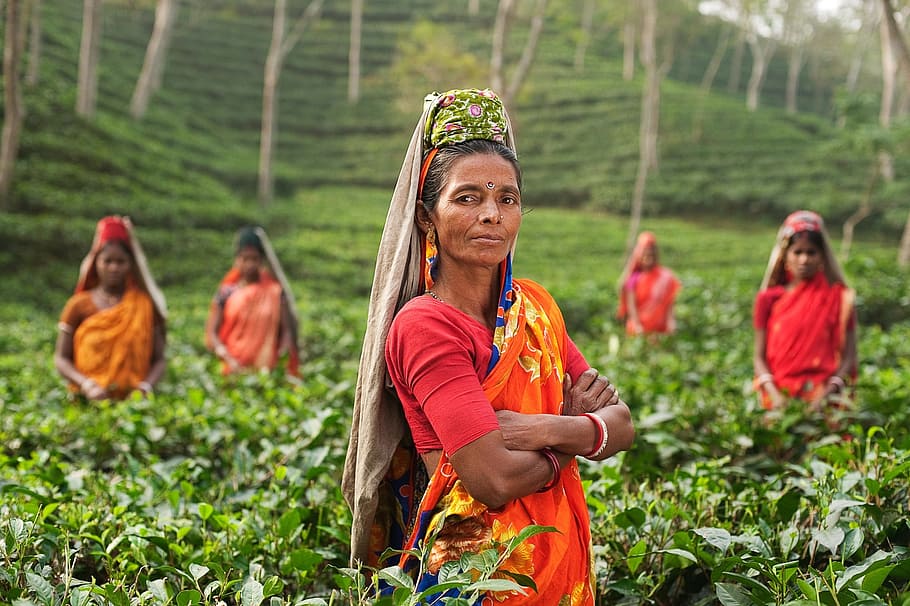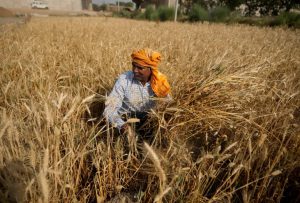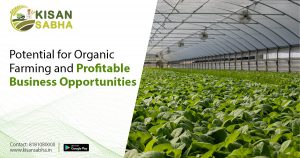During the initial phases of lockdown, when farmer groups from the interior of Maharashtra visited housing societies in Mumbai and Pune for the supply of fresh fruits and vegetables, overwhelmed residents greeted them with smiles and a sense of relief.
With the President of India promulgating ‘The Farming Produce Trade and Commerce (Promotion and Facilitation)’ and two other ordinances, barriers that exist in the free flow of agriculture produce between various states owing to the prevalence of various APMC legislation enacted by the State Governments have come to an end.
The Farming Produce Trade and Commerce (Promotion and Facilitation) ordinance 2020 has a new set of dispute resolution system with provision for hefty penalties for contravention of ordinance and rules under it.
In a country like India, there are about 126 million small and marginal farmers with less than two hectares of land. These farmers account for 86.2 per cent of all farmers in the country but own just 47.3 per cent of the crop area. So, one will have to wait to see the impact of the new system, ‘One Nation One Market’, will have on small farmers.
Let us revisit the post-liberalisation era. Many reforms like the Model APMC Act 2003, signing of an agreement on agriculture of WTO, the model agriculture produce and livestock marketing (APLM) Act 2017, the Model Contract farming act
2018, an online platform connecting the market places like eNAM were undertaken. Most of these reforms guided the future course of action for the APMCs and the private sector participation in agricultural marketing and food processing. One of the provisions in the Model APLM Act, 2017 is the promotion of direct interface between farmers and processors/ exporters/ bulk-buyers/ end users. This was to bring down costs which advantaged both the producers and the consumers. There are numerous successful examples of direct farmers markets all over India such as Sant Savla Mali Shetkari Bazaar in Maharashtra, Apni Mandi in Punjab, Rythu Bazar in Andhra Pradesh etc. Despite such measures, small or medium farmers have little or no say in the market. In such a situation, collective farmers’ marketing organisations like cooperatives and Farmer Producer Companies (FPCs) have an important role to play in increasing the bargaining power and reducing the input costs of the small and marginal farmers.
Even though a new ordinance has acknowledged the role of farmers cooperatives and FPCs, in the future central government may come up with separate guidelines for these organisations.
The cooperative sector in India is well developed and across the country, there are more than eight lakh cooperatives with membership spanning more than 270 million people. These cooperatives are more concentrated in the western states like Maharashtra and Gujarat, which have a substantial share in the agricultural lending, fertiliser production, rural warehousing and sugar production. Maharashtra alone has more than two lakh cooperatives.
FPCs, which are seen as a hybrid between cooperative societies and private limited companies, has gained momentum in the present decade after their promotion by the government of India during 12th five-year plan (2012 to 2017) and subsequent announcement of tax holiday for FPCs in the annual budget of 2018-19. The main function of FPCs is to aggregate crops from the member farmers so that they are better placed to negotiate the selling price and make more profits which go directly to the farmer. FPCs cannot completely substitute the cooperatives but serve complimentary to the cooperative societies particularly in functional areas which are not catered by the primary agricultural credit societies (PACS) like marketing and processing of agricultural produce.
The main lacuna of the present system is that farmers are ready consumers for the inputs but it is difficult for their outputs to find the market. As a result, the farmer is effectively a bad purchaser of inputs, as well a poor seller of her outputs.
According to the report of the National Commission on Agriculture (1976), one of the stated objectives of an efficient agricultural marketing system is to reduce the price spread between the primary producer and ultimate consumer. This if achieved by new reform measures advised by the ordinance, may boost the attainment of doubling the farmers’ income by 2022-2023. Price realisation can only be achieved after the strategic strengthening of the distribution and the supply chain network for agricultural produce. In the fresh food segment, consumers are predominantly linked through small grocers and street hawkers. Retailers selling branded products which are directly sourced from the farmers are largely absent with few notable exceptions like SAFAL (the fruit & vegetable marketing subsidiary of Mother dairy) and few start-ups.
As organised retail is growing on the online space for agricultural produce, many enterprises are marketing fruits, vegetables, dairy products and others from online platforms. During COVID-19 times, this is quite successful. For this, FPCs are emerging to be effective. FPCs offer a wide range of benefits compared to other formats of aggregation of the farmers.
According to the report of the committee on doubling farmers’ income, the concept of the Primary Rural Agriculture Market (PRAMs) may be useful for doubling incomes. PRAMs can provide services like direct marketing between producers and consumers and also serve as aggregation platforms for small farmers. These PRAMs and through them FPCs or a cooperative can be connected to end consumers in urban areas. In our pilot project, Maharashtra Cooperatives Development Corporation (MCDC) extended this concept and connected ‘Farmers Marketing Organisations’ in the form of a company or a cooperative directly to the end consumers in urban areas residing in the cooperative housing societies. MCDCs project connected around 78 FPCs to around 430 housing societies in cities like Mumbai, Pune and Thane. These societies catered to the needs of more than 11,000 families residing in these societies. This resulted in better price discovery for farmers and the availability of fresh fruits and vegetables at the doorstep to the consumers. But at the same time, there were issues related to lack of proper grading, wastages were on the higher side etc.
The most important learnings from this pilot were the need to boost the facilities for cleaning, grading and good storage at farm gates itself which could result in lesser wastages for small farmers.
So, the way forward in this era of free farm trade and commerce is to focus on capacity building. This is possible by building back end infrastructure and promoting collective farmers organisations like FPCs and cooperatives. This will ensure that small and marginal farmers will not be left behind in the liberalised agricultural marketing regime.





